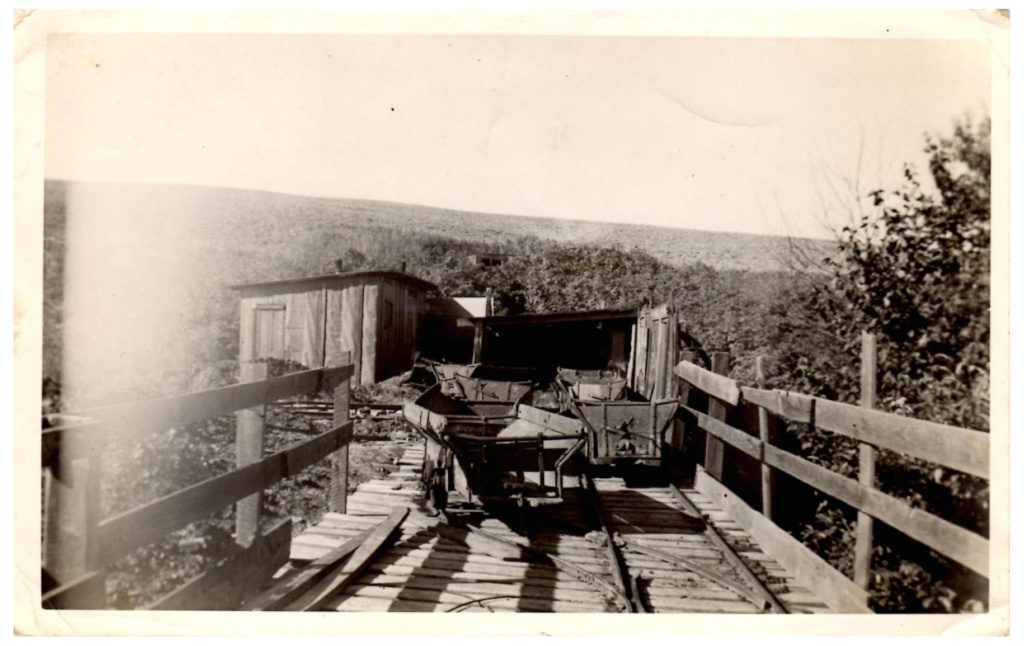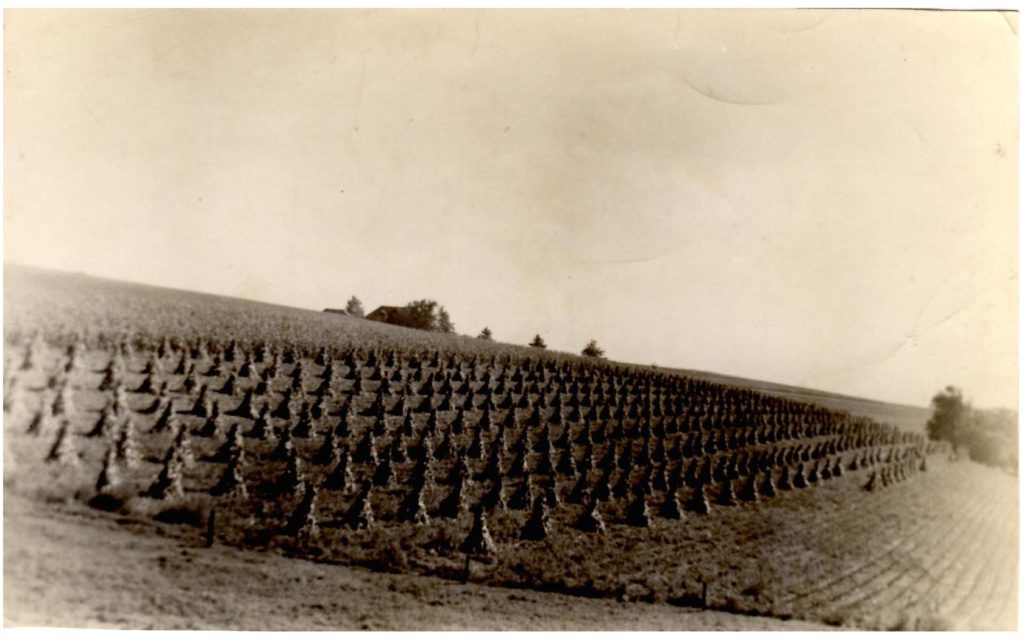The Corbin family has been part of Jefferson County since its earliest days. Henry Keys, my 3X great-grandfather, came to the Washington Twp. area in 1823. The following year, Henry, along with fellow settlers John McIntosh and Tommy Moore, built the first cabin in Beechwoods, near Kyle Run.
The story of how Henry met his future wife, Mary Ann Wilson, is quite dramatic. According to the History of Jefferson County,1 in the late fall of 1824 one of Henry’s neighbors “found the Wilson family, one morning, in the woods. They had lost their way the night before, and had to lie out in the cold all night. Mrs. Cooper made them a pot of hasty pudding, and after they had their breakfast, put them to bed, for they were all nearly frozen. One of the daughters [Catherine], afterward Mrs. Henry Keys, was so badly frozen that Mr. Cooper had to carry her to his house on his back.” Catherine and Henry were married in 1826 and had 12 children. Their daughter Mary Ann was married to Solomon Corbin (known to family and friends as Saul), the son of Robert and Nancy (Brenneman) Corbin, in about 1856. Mary Ann and Saul were blessed with three sons before Saul was killed in a logging accident on the North Fork Creek in 1862. He is buried in the cemetery by the Richardsville Baptist Church, not far from Henry and Catherine Keys.
Mary Ann and Saul’s eldest son, John Henry, was born on 23 Aug 1857. Known as Henry, he was married to Hannah Black in 1882; shortly after their marriage they moved to a homestead near Sterling, Kansas. Hannah died shortly after the birth of her fourth child, and the baby died as well. They are both buried in Sterling Cemetery in Kansas. Henry and the other three children (Amy May, Charles Milton and Henry Ray) returned to Pennsylvania, where he bought the farm in Beechwoods now known as Corbinview Farms and eventually remarried to Eliza McConnell. Henry was a forward-thinking farmer, being one of the first in the Beechwoods area to build a concrete cistern that provided running water for both the livestock and household use. On 26 Feb 1903, he co-presented with M. J. Smith on the topic of “Obnoxious weeds and how to fight them” at a farmers’ institute organized by the state department of agriculture.2
When Henry retired from farming and went to live in Brookville with his daughter from his second marriage, Jennie Wilson, his son Henry Ray (known as Ray) took over the operations on the home farm. In addition to a dairy herd, other livestock and a variety of crops, the farm lay over a vein of coal and the Corbin family earned a bit of extra income by allowing mining of the coal. Thinking they were helping their parents, Ray’s two youngest sons (Dan and Stanley) went down into the coal mine when they were probably under the age of 10. They had watched the miners enough that they knew just what to do — first they drilled a hole in the rock, put in a stick of dynamite and lit the fuse, then ran out of the mine. After the explosion, when the dust had settled, they went back in and loaded chunks of coal into a coal car and pushed it proudly up to the surface and down to the farmhouse. Needless to say, their parents were horrified!
Two world wars erupted during Ray’s stewardship of the farm. His wife, Ida (McDowell) Corbin, and her sisters contributed to the Red Cross during the first world war. In WWII, Dan served in the Army and Stanley served in the Navy Seabees, while their elder brother Dale kept things running on the farm and raised crops like potatoes that went to feed the military. Ray and Ida traveled to Bremerton, Washington, where Ray worked in the shipyards repairing ships that had been damaged in battles in the Pacific.
The family is eternally grateful that everyone made it safely back to Beechwoods following the end of WWII. In addition to running the farm, Dale also served for many years as Jefferson County Treasurer. His son, Paul, followed in his footsteps after Dale’s retirement from public service. In 1998, the State Secretary of Agriculture presented a Century Farm award to Paul marking the centennial anniversary of the family farm.3 Although the herds of dairy cattle are now gone, Corbinview Farms continues to operate as an event venue. The event most beloved by the family is the annual Corbin Family Reunion, because even though many of the Corbins no longer live in Jefferson County, it’s nice to know that we all have roots there.
Story and photos contributed by Eileen Drust
Author bio: Eileen (Corbin) Drust lives in Lakewood, Ohio, along with her husband, Gene. She has two daughters, Liz and Jenny; two step-granddaughters, Julia and Kaitlyn; and one grandson named John Henry. Besides being a voracious reader, Eileen enjoys sunsets on the beach of Lake Erie, digging into family history and rambling around old cemeteries. In the summer of 2022, she and Gene visited the homestead sites of John Henry and Hanna Corbin near Sterling, Kansas, and that of Henry Ray Corbin in Woods County, Oklahoma.
1 Kate M. Scott (Ed.). History of Jefferson County, with Illustrations and Biographical Sketches of Some of its Prominent Men and Pioneers, 1888, p. 42.
2 The Jefferson-Democrat. (12 Feb 1903). Farmers’ institute, page 8.
3 Country Neighbors. (15 Aug 1998). Corbin family receives Century Farm Award.



